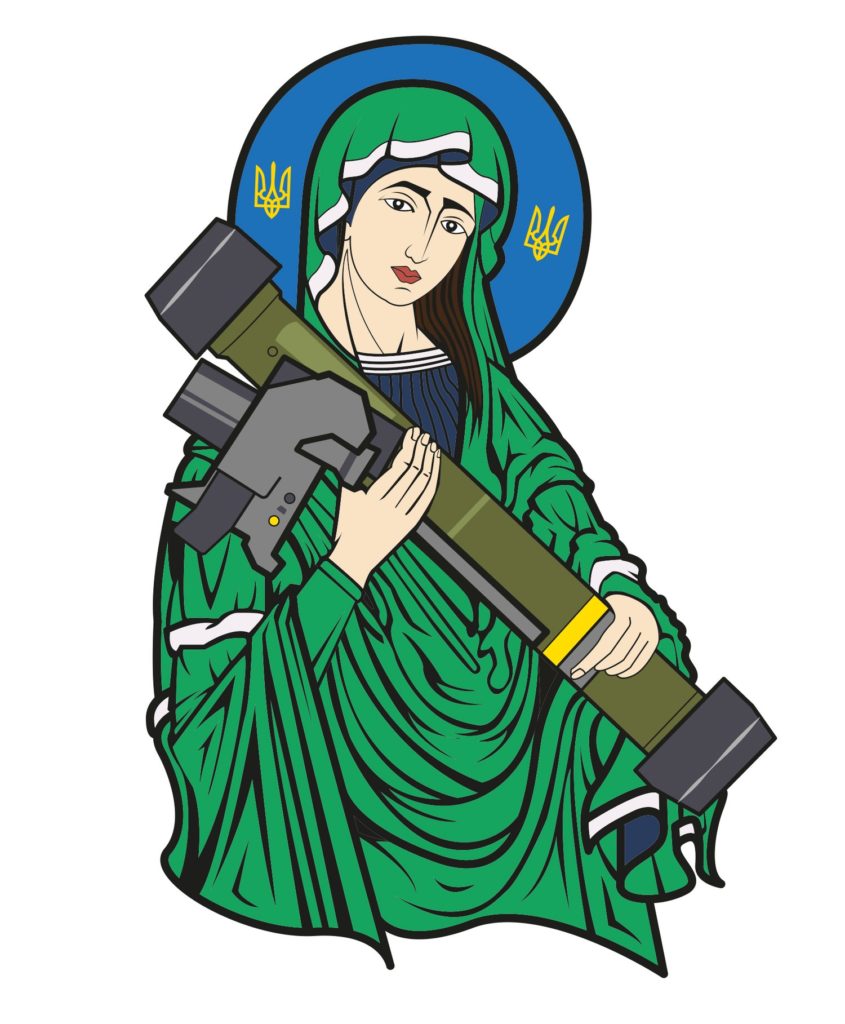In a country full of cell phone cameras and major media outlets — and as a rapidly changing major conflict — images of the Russian invasion of Ukraine flood television and social media. Twitter serves as a rough chronological catalog of ongoing firefights with various hashtags providing information, with #Ukraine, #UkraineRussiaWar, and #UkraineWar being a few. Amid this backdrop, one weapon in particular features as an outsized symbol of Ukrainian resistance: the Javelin missile.
Social media allows for a torrent of largely unfiltered conflict information sitting alongside deep expert commentary. Whether due to character limit or expertise, pundits and specialists tweet dozens of acronyms and rattle off the names and effects of weapons systems as if the information is common knowledge. For some commenters, knowing your multiple launch rocket systems (MLRS) from your anti-tank guided missile (ATGM), along with understanding the unique features of thermobaric weapons, is the bare minimum for even being able to have an opinion about anything, whether about weapons or not, in Ukraine. Many hastily informed amateurs wade right into the social media discourse as well, as if there are an unlimited number of seats at the table of expertise, if only one types with enough confidence.
The unending information, along with the juxtaposition of its varying quality, makes for a complicated social dialogue. Often, though, public discourse parses through this complexity and identifies a more simple narrative. One emerging narrative is that of the material and symbolic importance of the Javelin missile. Among the Stinger missiles, Main Battle Tank and Light Anti-Tank Weapon (NLAWS), and now even Soviet-era Strela missiles, it’s the Javelin that seems to have disproportionately captured public attention. But is the Javelin a divine tool of intervention or simply one of the more effective weapons on battlefields across Ukraine?
WHY THE THE JAVELIN MISSILE IS EFFECTIVE
Though predating the recent Russian invasion, an image of Mary Magdalene holding a Javelin missile, displayed in the style of Eastern Orthodox iconography, started to flood social media. Commonly referred to as Saint Javelin, this image symbolizes much of the seemingly miraculous Ukrainian resistance against overwhelming Russian forces. A website now features stickers and other items for sale, raising hundreds of thousands of dollars in just a few days to support Ukrainian orphans and victims of violence.
Whether we look at unexpected military outcomes as miscalculation, friction, or the fog of war, the image of Saint Javelin linked with Javelin missiles symbolizes a better-than-expected showing and the not-so-subtle nod to divine intervention in favor of Ukraine’s morally justified defensive stand. While major landmarks around the world light up in the blue and yellow of Ukraine’s flag, Saint Javelin and her defenders face off against marauding Russian tanks. Religiosity aside, the weapon has been credited as a major factor in the Ukrainian resistance’s ability to withstand Russian advances.
The Javelin missile being held by Saint Javelin has become a symbol of resistance in Ukraine. But is the Javelin a divine tool of intervention or simply one of the more effective weapons on battlefields across Ukraine?
Even without an official religious blessing, the functional capabilities of the Javelin are impressive. While capable of direct flight to a target, the FGM-148 Javelin missile’s signature feature is a “top attack” trajectory. After a soft launch from the missile tube, the Javelin’s primary flight motor then activates, lifting it high in the air, followed by a steep descent. Much like its namesake, this trajectory allows the Javelin to strike the top of a target rather than move in a straight line. This is particularly advantageous against tanks and other armored vehicles, as the armor on top of the vehicle is typically thinner or less capable of withstanding penetration. The top attack capability coupled with the Javelin’s high-explosive anti-tank (HEAT) warhead allows it to overcome nearly all currently fielded armor across the globe.
The missile sits inside a tube and — when ready for use — is attached to a Command Launch Unit (CLU), which serves as the targeting system. Users have access to multiple visual aids as they identify their target, fire, and can immediately move as the missile continues to track the target without the need of human intervention. This “fire and forget” capability gives users significant survivability advantages as they can run, hide, or immediately add a new missile and launch again.
While not in and of itself a sole solution to Russian aggression, and limited in supply throughout precursor skirmishes in Ukraine’s Eastern territories, the Javelin’s mobility and ease-of-use are a potent counter to otherwise dangerous and well-protected tanks, armored vehicles, and even low-flying helicopters. Expensive compared to other man-portable missile systems, and slightly heavy weighing nearly 50 lbs (22.6 kgs), its comparative battlefield effectiveness makes it stand out as a preferred option for a man-portable anti-armor weapon. Alongside a variety of military equipment in the defense of Ukraine, the Javelin’s reputation continues to grow.
There are other factors coalescing to grow the outsized image of the Javelin as a signature Ukrainian weapon. As a US-made missile system, the Javelin’s origin points further to the divide between Ukraine and Russia. Former President Donald Trump was impeached over allegations that he withheld $400 million dollars in military aid — including Javelin missiles — to Ukraine over Ukrainian President Volodymyr Zelenskyy’s refusal to launch an investigation into then–US Senator Joseph Biden.
Also, while many outside the military may be unaware of specific weapons systems, a unique demographic has years of experience with the Javelin: video gamers. Featuring prominently in “Call of Duty” and “Battlefield 2042” video games, among many other military simulation games, the Javelin is regularly used by players in realistic virtual environments every day. It is unsurprising, then, that a tech-minded population on social media platforms may disproportionately contain video gamers compared to broader society. When a familiar weapon shows up, where players may have virtually fired the weapon hundreds or thousands of times, this lived experience, though in a fictional setting and as a “synthetic experience,” provides a touchstone for seemingly informed conversation about otherwise highly technical aspects of conflict.
THE SYMBOL OF RESISTANCE
As a symbol of resistance, Saint Javelin serves as a unique, recognizable image. It provides a clear public narrative that characterizes Ukraine’s defense as divinely sanctioned. The Javelin’s functional capabilities and real-world successes serve to grow the mythos of the weapon. Trump’s own impeachment — and recent, likely apocryphal, claims to be the primary purveyor of the Javelin — further embed the weapon as a featured aspect of the Ukrainian conflict. And multiple generations of gamers who have years of virtual experience with the weapon (at least 75 million unique players in “Call of Duty: Warzone,” and 227 million people in the US, alone, report playing video games of some type, with 80% of all players being 18 years or older), hop on social media to discuss their own tactical and strategic uses of the Javelin. These video gamers are providing a favorable environment for conversations involving otherwise opaque military analysis and a non-specialist public. Whether those conversations accurately reflect the real-world function of the weapon is variable, but people feel like their experience — even virtual — is at least somewhat viable.
The conflict is complicated, and information making its way to the world is almost certainly incomplete. The Javelin’s symbolic role provides a unique touchstone between cultural and material factors, allowing people from a variety of backgrounds to feel connected to at least part of the conflict. The current form of fighting in Ukraine is young, and military aid containing shipments of Javelin missiles continues to filter into the conflict zone, but as an early symbol of Ukrainian resistance, Saint Javelin and her promise of divinely inspired anti-armor capabilities, finds its way across millions of computer screens every day.
Matthew Parent is a PhD candidate at the University of Connecticut studying the symbolic significance of military technologies. He is also the Impact and Outreach Coordinator at the Belfer Center’s Project on Managing the Atom at the Harvard Kennedy School.






















